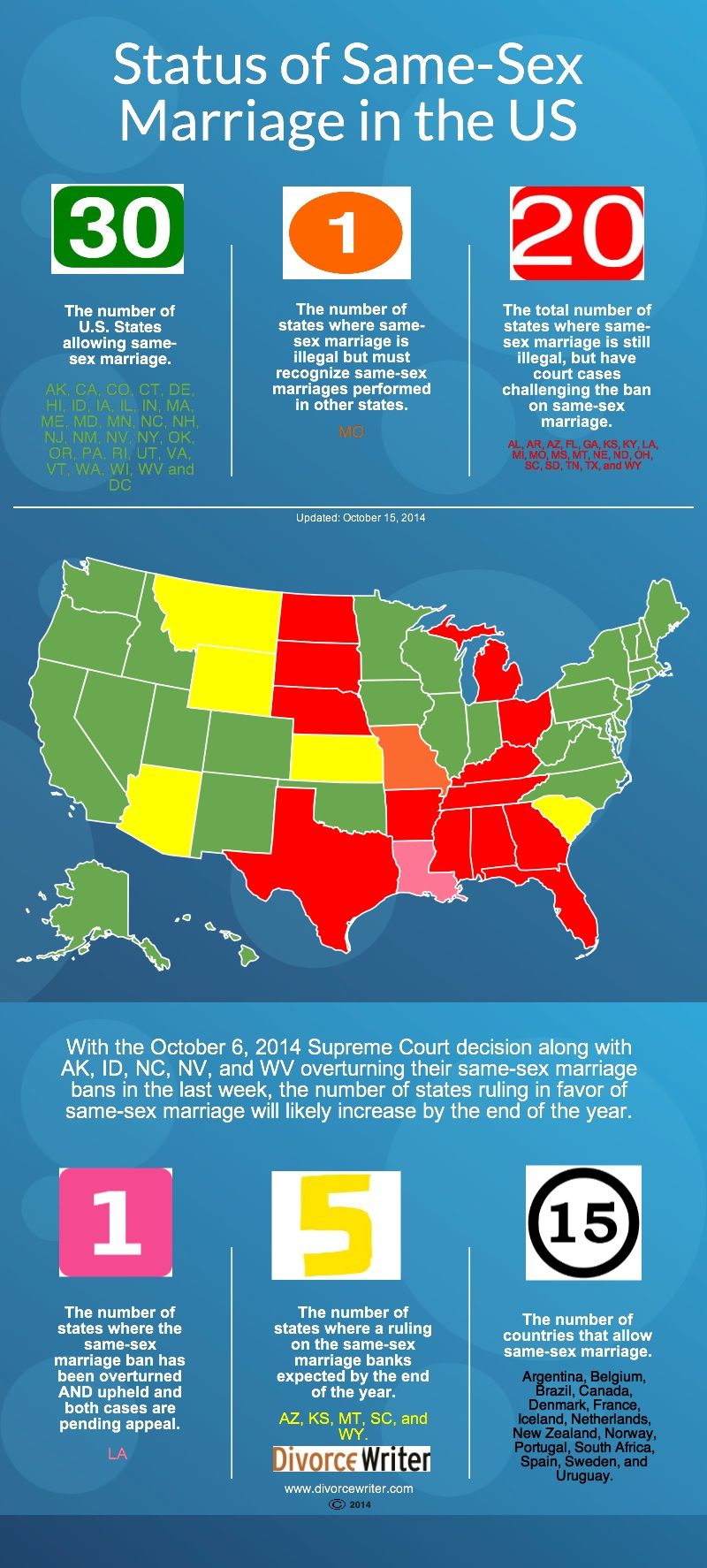Same-Sex Marriage
Supreme Court Decision
Update: On Friday June 26, 2015 the Supreme Court ruled in favor of same-sex marriage. The ruling affects all 50 states and makes it legal for same-sex couples to marry (and divorce) in every state. For more information on this ruling, see our article here.
On Monday October 6, 2014, the US Supreme Court denied appeals from five states seeking to retain their bans on same-sex marriage, which cleared the way for couples in Indiana, Oklahoma, Utah, Virginia, and Wisconsin to legally marry. The decision opened up opportunities for couples in Colorado as well because Colorado is under the same 10th Circuit jurisdiction as Utah and Oklahoma. Just one day later, the 9th Circuit Court of Appeals, in a unanimous ruling, struck down same-sex marriage bans in Idaho and Nevada. The remaining twenty states where same-sex marriage is still illegal have court cases pending challenging a same-sex marriage ban. Experts believe the following states will soon follow: Arizona, Kansas, Montana, South Carolina, and Wyoming. Likely, the rest of the country will follow.

Same-Sex Divorce Next?
Inevitably, with the rise of same-sex marriage will be the rise of same-sex divorce. Even though conventional divorce is relatively easy in the legal world, same-sex divorces may not be the case. Couples who travel to a state where same-sex marriage is legal to wed then return to their home state to live. Complications arise for couples who want to divorce and whose home state does not recognize same-sex marriage. Most states that don't recognize the marriage, won't allow a divorce.
With gender neutral language DivorceWriter's forms are designed to be used by any couple going through an uncontested divorce.
See Also
- U.S. Divorce Filing Fees - How much does each state charge?
